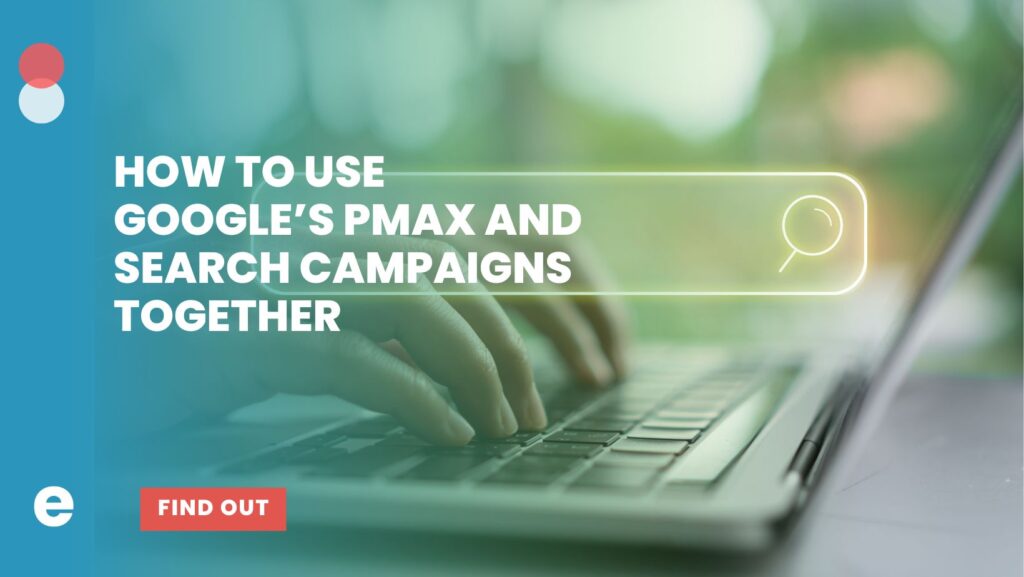The upcoming Google Algorithm update includes the implementation of Mobile-Friendly weighted search and Core Web Vitals. Those changes mean you will need to make updates to your online marketing strategy and SEO content. In this article, we discuss the timing of the launch and dig into a bit of detail on specific changes in the section titled Google’s Page Experience Update & Core Web Vitals. Then we discuss the new focus on what Google calls Page Experience and what that entails. From there, we move on to discuss Mobile-First Indexing and Mobile & Page Experience. Feel free to jump ahead to any section if you feel like you need a better understanding of a specific topic. We also discuss Available Tools you can use that will help. In the end, we discuss what this means for your business and website in What It All Means. There is no need to worry if you have a plan ready and prepare your team and site for the coming changes. And, of course, the experts at Enilon are here to help if you need a proven marketing partner to walk you through any large-scale projects you might need.
Second Chances To Make First Impressions
You know the saying ‘you never get a second chance to make a first impression,’ right? That is true with future in-law, and it can also be true with potential customers and clients coming to your website. Based on your web presence, you may be losing potential clients or potential sales before they ever get through the virtual front door. Wouldn’t it be of benefit to be able to identify where first impressions might be going wrong? This would enable you and your team to rectify those issues to make future impressions that much more powerful. Optimizing your digital first impression will lead to better and better conversion rates, click-throughs, sales, or sign-ups. Help is on the way!
You might have all the right SEO tools, ads, and funnels in place to get people clicking your link in search and still lose them right when they get to your digital front door. Well, in steps Google, to create a remedy to cure what ails your user page experience (digital first impressions) woes. You might have all the right tools, ads, and funnels in place to get people clicking your link in search and yet be losing them right when they get to your front door. Let us look at their timeline for launch and then dive into what these changes will mean for you, your business, and your SEO/marketing strategy.
Google’s Page Experience Update & Core Web Vitals
In July 2020, Google confirmed that it was pushing back its planned 100% rollout of the “mobile-first indexing” update due to the uncertainty caused by the COVID-19 pandemic. Google had scheduled the initial rollout for September 2020. Google again pushed it back for March 2021. As of now, it will be mid-June 2021, with the rollout continuing to August, which is when we may start to notice SERP fluctuations.
In Google’s own words, here is what it means…
“The page experience signal measures aspects of how users perceive the experience of interacting with a web page. Optimizing for these factors makes the web more delightful for users across all web browsers and surfaces and helps sites evolve towards user expectations on mobile. We believe this will contribute to business success on the web as users grow more engaged and can transact with less friction.”
So what does this Google algorithmic adjustment mean for your business website, your SEO strategy, and what you can expect.
Page Experience
Page experience is a series of signals used to measure how users perceive their experience interacting with a website beyond its pure information value. Tools such as Google Search Console and Google PageSpeed Insights help quantify user experiences of your website each time they visit. When you can quantify these first impressions, you can adjust your website and scale to the needs of a growing and increasingly demanding digital audience and savvy online customer base.
These tools and others measure what will become increasingly important to ranking your website once the new Google algorithm roles out. Core Web Vitals, a set of metrics that measure real-world user experience for loading performance, interactivity, and visual stability of the page, will play a more critical role in the weight your website carries regarding SERP. Core Web Vitals include:
- Mobile Friendliness
- Safe-Browsing – no malware, for starters
- Https — secure website, especially with regards to data protection and online banking/purchasing safety.
- Non-intrusive Interstitials — think of these as web browsing interruptions. Intrusive Interstitials are bad, i.e., annoying to the customer/shopper, such as pop-up ads. Interstitials that might be classified as good, or at least expected, are pop-up a free download or discount code in exchange for the customer’s email address.
- First Contentful Paint [FCP] – meaning the user-perceived page load speed, based on the first content, be it text, an image, a button, accordion, or drop down, that the user sees on their screen.
- Largest Contentful Paint [LCP] – meaning the user-perceived page load usefulness. While FCP gauges the speed at which the user first sees some content, the more helpful metric is LCP which calculates how fast they perceive the page as valuable and relevant to their initial search.
- First Input Delay [FID] – this measures your customer’s first interaction with your website or how fast they engage. FID actions can include opening accordion text, clicking on menu options, entering their info in a contact form, placing an item in a cart, or choosing a link to the next choice relevant to them.
- Cumulative Layout Shift [CLS] – refers to your site’s “visual stability.” Have you ever misclicked on something because elements of the page were still shifting and moving around as more content loads?
These new Core Web Values all help rate and rank your website based on user experience [UX]. Google evaluates and quantifies UX for your site based on page loading, page intractability, and visual stability. These new changes may sound daunting, but in the long run, implementing these changes on your website will likely result in greater conversion rates, increased engagement, higher cart sales completions, and more leads.
Mobile-First Indexing
“Mobile accounts for approximately half of web traffic worldwide. In the first quarter of 2021, mobile devices (excluding tablets) generated 54.8 percent of global website traffic, consistently hovering around the 50 percent mark since the beginning of 2017.” Statista
Mobile browsing and mobile search are here to stay. Google knows it, and based on that knowledge, is moving towards a Mobile-first approach to SEO. Mobile-first indexing means Google primarily uses the mobile version of site content for indexing and ranking. Mobile-first indexing and mobile-centric SEO are based on the knowledge that most users search and browse on a mobile device. Therefore the Googlebot primarily crawls and indexes pages with a smartphone agent. Mobile traffic makes up 54% of Google traffic worldwide.
Page Experience and Mobile
As the monumental shift towards mobile browsing and mobile search continues, it will only magnify your business’s need for not just a mobile-friendly website but a mobile-centric web presence. The First Content Paint [FCP] will become increasingly important as mobile users expect site pages to populate instantaneously on their device, especially with the rise of 5G cellular networks deploy worldwide.
Metrics such as DOMcontentloaded will become less important because they have never adequately reflected the actual user experience as a splash screen might appear. At the same time, the relevant and useable page content takes much longer to load. These experiences create a frustrating UX, and thus DOMcontentloaded was a sometimes misleading metric. Users can say the same for the Page Load metric.
All these changes are coming to Google as global users continue to migrate to mobile browsing and mobile search, which is already at +50% globally. While you need to make adjustments to prepare for the Google Page Experience rollout for mobile, keep in mind that Page Experience ranking is also coming to desktop eventually. This shift is one that businesses and online marketing brands must be aware of, embrace, and prepare for lest they be left behind.
The digital experience starts with a user’s first impression of your site. The implementation of Core Web Vitals and the new set of UX signals will affect your page rank. In this new page experience update, the existing signals for page experience will be combined with Google’s Core Web Vitals to create a broad “page experience” ranking signal. There are steps that Enilon can help you can take to prepare for this inevitable update.
Available Tools to Help Prepare Your Site
There are tools available to help as you prepare:
- PageSpeed Insights mentioned earlier measures your page’s loading and running speed on both mobile and desktop. Copy and paste your URL into the PageSpeed Insights to run a report.
- The Chrome DevTools panel is a collection of extensions you can install in your Chrome browser to measure different aspects of your site’s page performance. There is an extension that simulates how your page looks and acts on mobile platforms. Another helps you analyze then debug your page’s JavaScript. Recently, Google added an Experience section to the panel to check for instability issues and layout shifts.
- The Web Vitals extension will allow you to monitor Core Web Vitals in real-time.
- The Mobile-Friendly Test scores pages based on how well they perform on mobile devices. It displays an image of how the page looks on mobile and offers suggestions for resolving page issues. You may choose to check the performance of individual pages or run a full-site usability report.
Once you discover what areas of your site need improvements, you can address these issues and improve the overall UX. Optimizing your page will help improve the UX for visitors to your site, and it will help your SERP rank once the page experience update takes effect.
Page Experience, the Mobile Shift, and What It All Means
To be clear, first impressions are important, but let’s not throw out the baby with the bathwater. These core web values do not usurp the need for quality, valuable content. It is not enough to increase page load speed and have content load rates improve if the content loading is not engaging, relevant, and appropriate to the user’s initial search query. Yes, page load speed and your page’s user experience (UX) could affect your site ranking and ongoing SEO strategy. How drastic the changes will affect site rankings has yet to be seen. The solution is to have a solid plan to make the appropriate changes to your website to make it more and more mobile-friendly and comply with Core Web Vitals. As well as continue creating great content and, if needed, join with an expert partner like Enilon to implement the best strategy possible.
Just remember, these changes do not replace or negate the need for your website to have great, helpful content that is both relevant and useful to your target audience. The changes will only enhance the need for a cohesive and robust online marketing strategy to keep your business and products in front of your online audiences. Enilon is here to partner with you to make the relevant changes to optimize your website for the continued shift towards mobile search and make improvements based on Core Web Vitals.


